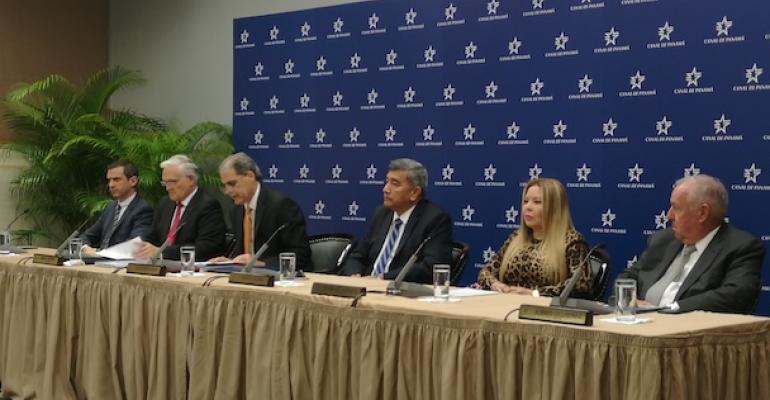“We will ensure that everything is carefully considered in the new toll structure," said ACP Administrator Jorge Quijano. The ACP has received 29 letters commenting on the proposal from all the segments of the industry, Quijano told Seatrade Maritime News. Once they are revised by the ACP, a new meeting with the Board of Directors will consider to modify or not the present proposal and a final proposal may be ready by early-mid September.
Read more: Panama Canal proposes new toll structure
So far, the proposed date for the implementation of the changes in the toll structure will be January 1, 2020. Six members of the industry from the UK, Japan and Panama presented their comments.
Both the Japanese Ship Association (JSA) represented by its vice president Takashi Nakashima and Wallenius Wilhelmsen required an extension, at least six more months, of the date of implementation since the IMO Sulphur new regulation enters force also January 1, 2020 doubling financial burden for the industry.
“The rate of toll hikes (5% to 15%) which is very high, might endanger the future growth of the trade,” commented JSA that noted the incentives given should be shared by all the industry and not only to a handful lines [boxships], and that the increased rate for bigger vessels such as neo-panamaxes which are in general more environmental friendly should be, at least, aligned with the one for smaller vessels (panamaxes).
The car carrier group Wallenius Wlhelmsen was concerned by the “huge increase” for the neo-panamaxes of 15% much above the 5% rate “for our size panamax tonnage” making the cost of cubic metres “far higher for vehicles carriers than other segments” and proposed the increase to be for car carriers of 8% in 2020 for neo-panamaxes and 5% for panamanaxes over a two-year period of 2.5% each year.
Specifically, the proposed tolls modifications include the following:
· For Dry bulk segment: Matches tolls charged to neo-panamax vessels carrying iron ore with the tolls assessed for grains and “other dry bulk” cargoes. Includes a tariff adjustment for neo-panamax dry bulkers transiting in ballast.
· For Passenger segment: The modifications add transparency to the tolls structure of the passenger segment by charging based on the maximum passenger capacity that can be carried by each specific passenger vessel. The unit of measurement is changing from a “per berth” to a “per passenger” basis, making it easier for cruise lines to transfer transit costs to their customers.
· For Containership segment: Offers more attractive incentives for customers who benefit from the Panama Canal Loyalty Program by adding new levels with rates in the capacity charge for shipping lines deploying between 2,000,001 to 3,000,000 teu, and additional reductions for lines deploying an incremental over 3,000,000 teu.
· For Vehicle carrier and ro-ro segment: Creates a new tariff category precisely designed for neo-panamax vessels. Additional modifications for this segment include slight changes in tolls tariffs for Panamax-sized vessels, as well as minor adjustments based on vessel size ranges.
· For Tankers, chemical tankers, LPG and LNG vessels: Toll structures remain unchanged, but tolls adjustments are proposed to more closely align with the value of the route.
· For Small vessels and local tourism: Revised to consider the resources used in the transit and the complexity of accommodating these vessels within the locks’ chambers.
· Fpr Containers on deck: Reviews the rates charged to non-container vessels carrying containers on deck, to apply a teu differentiated charges for teu that are empty, loaded dry and loaded refrigerated.
Copyright © 2024. All rights reserved. Seatrade, a trading name of Informa Markets (UK) Limited. Add Seatrade Maritime News to your Google News feed.


